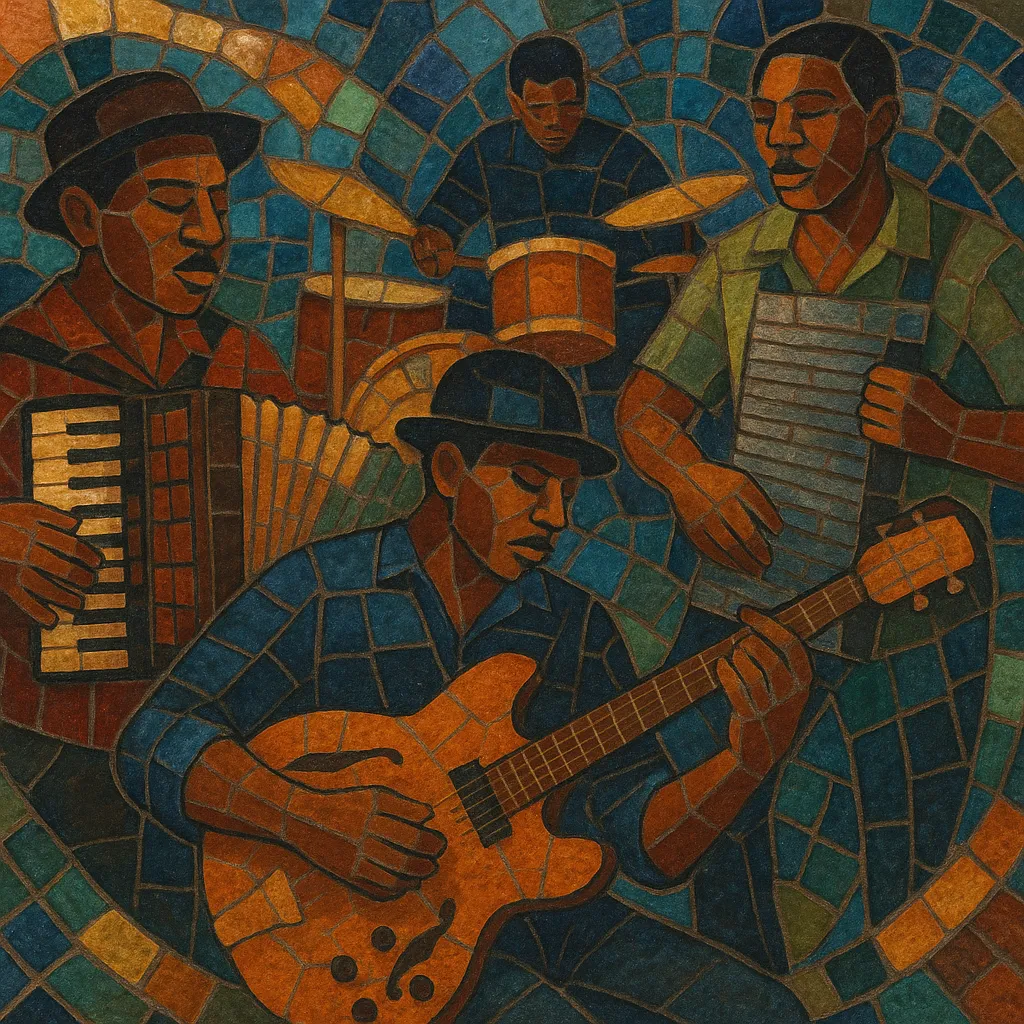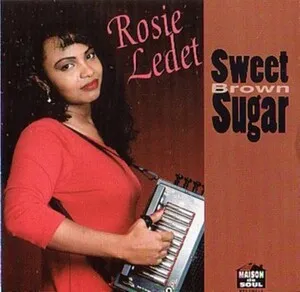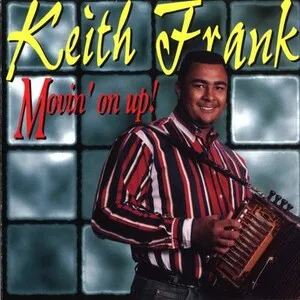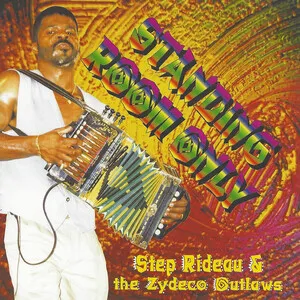
Your digging level
Description
Nouveau zydeco is the modern, club-ready evolution of Louisiana Creole zydeco. It keeps the core instrumentation of accordion and rubboard (frottoir) while adding electric bass, drum kit, electric guitar, and frequently keyboards, horns, and contemporary production.
Rhythmically, it emphasizes hard-grooving two-steps and shuffles with a "double-clutch" feel, often borrowing funk syncopation and New Orleans R&B backbeat. Harmonically it favors vamp-based I–IV (and I–bVII–IV) loops, blues inflections, and call-and-response vocals in English and Louisiana Creole French.
Compared with classic zydeco, nouveau zydeco embraces bigger amplification, tighter funk rhythms, and crossover colors—from soul and rock to occasional hip-hop touches—aimed at dance floors, trail rides, and festival stages.
History
Zydeco emerged in southwest Louisiana’s Creole communities in the mid-20th century from earlier Creole la-la, Cajun dance music, blues, and New Orleans R&B. By the 1950s–70s, Clifton Chenier had expanded its range with amplified accordion, saxes, and a strong R&B groove, paving the way for a more modern, urban sound.
In the 1980s, artists like Buckwheat Zydeco brought zydeco to national stages with bigger bands, keyboards, horns, and rock-leaning arrangements. Major-label releases, touring with rock and pop stars, and the festival circuit amplified the style’s profile. Amplification, tighter funk feels, and club-oriented arrangements became hallmarks of the nouveau approach.
Beau Jocque and band-led outfits such as Zydeco Force popularized heavier, bass-forward grooves ideal for Louisiana dance halls and trail rides. Keith Frank, Chubby Carrier, Geno Delafose, Nathan Williams, and Terrance Simien broadened the palette, weaving in soul, modern R&B, and rock textures while keeping the accordion-and-rubboard core.
Younger bandleaders like Chris Ardoin polished production, incorporated contemporary drum feels, and sustained dance-floor momentum. Festival mainstays (New Orleans Jazz & Heritage Festival, Festival International de Louisiane) and regional events cemented nouveau zydeco as a living, dance-centric branch of Creole culture. The style remains tied to community celebrations—trail rides, clubs, and family gatherings—while continuing to absorb modern R&B and pop influences without losing its Creole identity.








